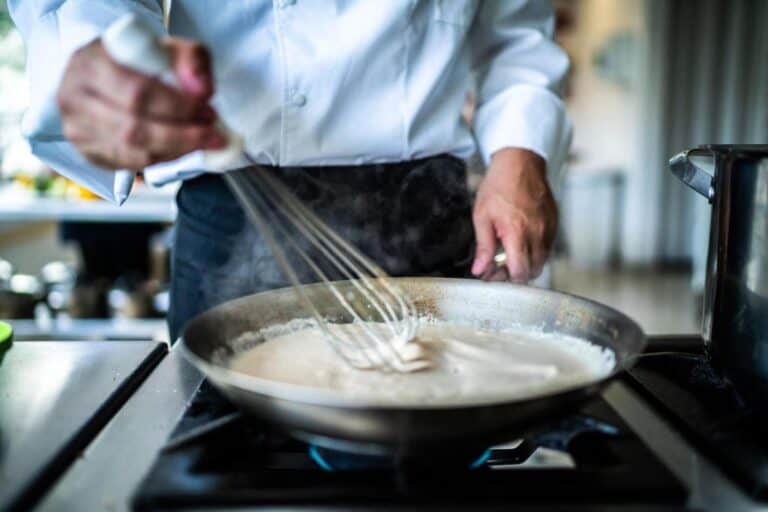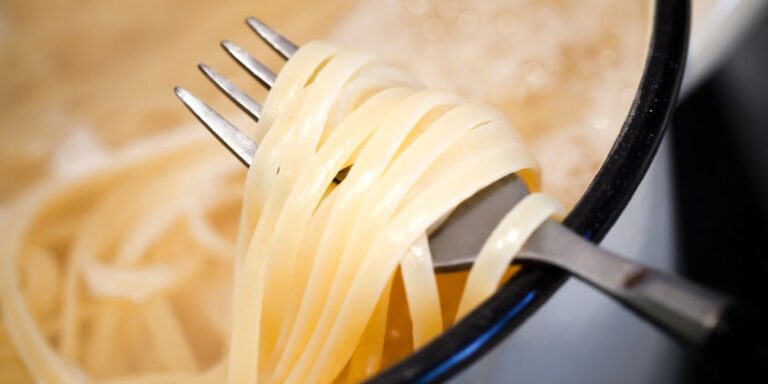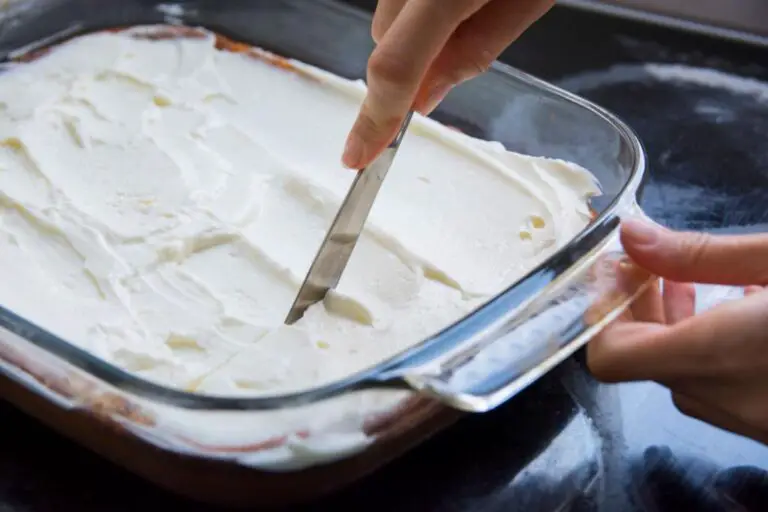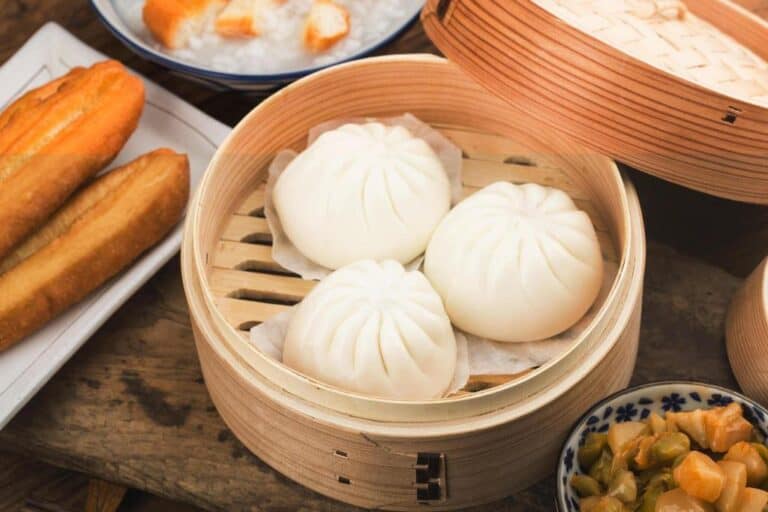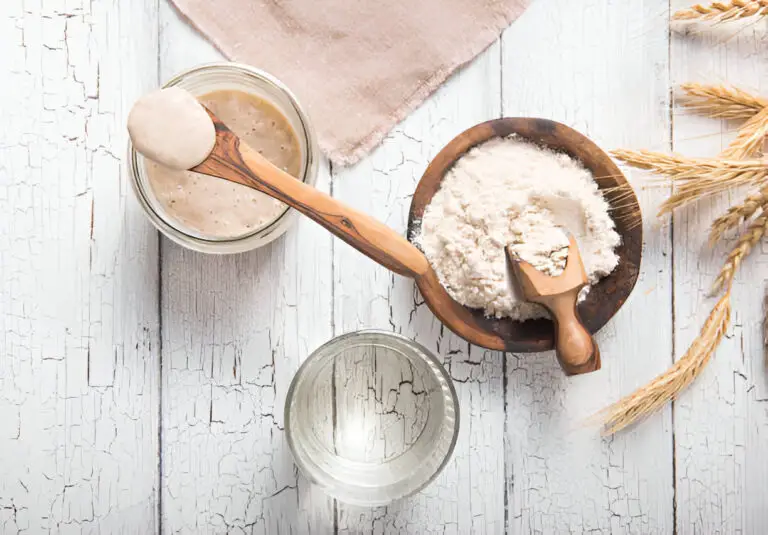The Ultimate Guide to Reheating Turkey from Whole Foods
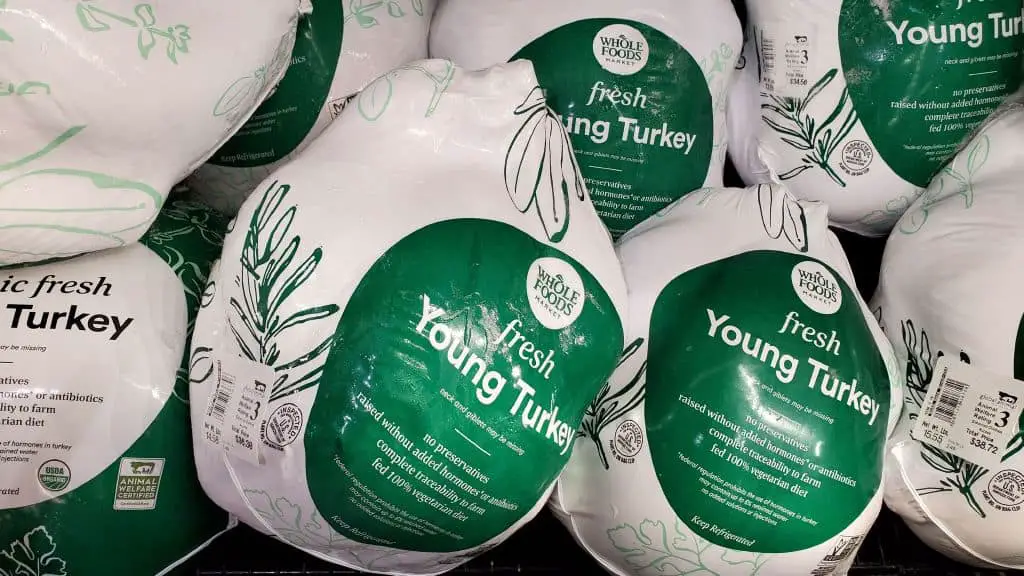
The holiday season is coming. Many of us eagerly await that mouthwatering turkey from Whole Foods. But what happens when you have leftovers? How do you ensure that the succulent meat retains its juiciness and flavor while being reheated?
Don’t fear. In this guide, we will give you step-by-step instructions. They will teach you how to reheat your pre-cooked turkey purchased from Whole Foods. Whether it’s for a cozy family meal or a gathering with friends, these tips and tricks will ensure that every bite remains as delicious as the first.
So put aside any previous apprehensions about reheating your prized bird; this article has got you covered! The techniques are foolproof. They are tailored specifically for Whole Foods’ pre-cooked turkeys. With them, get ready to indulge in tender, juicy poultry. You won’t compromise on taste or safety.
Importance of Properly Reheating Turkey
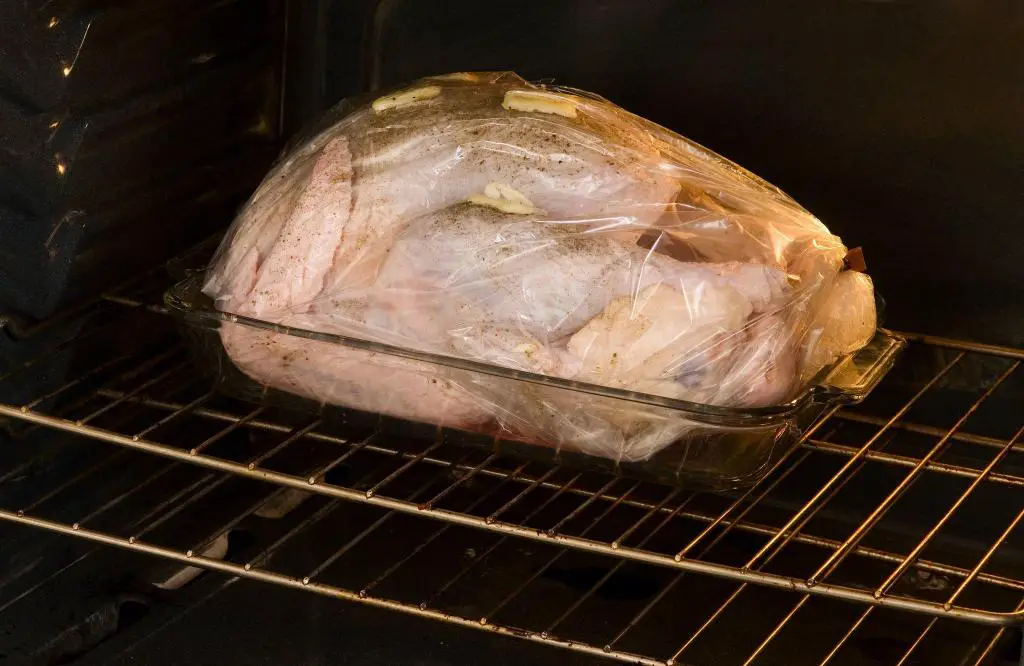
Reheating turkey may seem like a simple task, but it is crucial to follow specific guidelines to ensure both the safety and quality of the meat. Poultry, including turkey, is particularly susceptible to bacterial growth if not handled properly during reheating. By using the right reheating methods, you can avoid any health risks that might come from touching or undercooked turkey.
One of the main reasons for following specific guidelines when reheating poultry is to prevent foodborne illnesses. These are caused by bacteria like Salmonella and Campylobacter. These harmful microorganisms can be present in raw poultry and multiply rapidly within the temperature danger zone, which ranges from 40°F (4°C) to 140°F (60°C).
It is important for the whole cooked turkey to reach an internal temperature of at least 165°F (74°C) before reheating it. This ensures that any remaining bacteria are destroyed and prevents the risk of illness.
Moreover, proper reheating methods also play a significant role in maintaining the taste and texture of your turkey. Repeated exposure to high temperatures can dry out cooked meat quickly, leaving it tough and unappetizing.
However, by using gentle heat sources, like an oven at a low temperature or steamers, instead of microwaves or direct stovetop heating, you can keep moisture in while warming your leftover Whole Foods turkey.
Preparing Turkey for Reheating
Before diving into the reheating process, there are a few essential steps to ensure that your turkey is ready and safe to eat. First and foremost, if you store your turkey in the freezer, make sure it is thoroughly thawed before reheating.
This can be done by transferring the turkey from the freezer to the refrigerator a day or two in advance. A general rule of thumb is to allow 24 hours of thawing time per 4-5 pounds of turkey.
Once your turkey has thawed completely, it’s time to remove any packaging that may have been used during its storage or transportation. Carefully unwrap the turkey, making sure not to tear or damage any skin, as this could affect moisture retention during reheating. Note any extra parts, like gravy packets or stuffing containers, that came with your whole bird from Whole Foods.
Follow proper thawing and unpacking. Doing this sets you up for success when it’s time to reheat your tasty, pre-cooked Whole Foods turkey. Now that we’ve taken care of these initial steps, let’s move on to discussing different methods for reheating without compromising taste or texture.
Oven Method
When it comes to reheating your turkey from Whole Foods, the oven method is a tried and true classic. Not only does it provide even heat distribution, but this method also allows you to retain that coveted crispy skin while ensuring the meat inside is juicy and tender.
But what temperature setting should you use? The ideal temperature for reheating turkey in the oven is 325°F (163°C). This moderate heat ensures that the meat warms up evenly without drying out.
Now, let’s talk about time estimates based on the weight of your turkey. As a general guideline, you can expect to reheat your pre-cooked turkey at a rate of 15 minutes per pound (0.45 kg). So if you have a 10-pound (4.5 kg) bird, it would take around two and a half hours in total cooking time to reach an internal temperature of 165°F (74°C), which is considered safe for consumption.
These are just estimates. Factors like oven or room temperature variations can affect cooking times. It’s always best to use a food thermometer. Put it into the deepest part of the thigh or breast. This ensures that your reheated turkey reaches the desired internal temperature and stays safe to eat. So get ready to turn on those ovens and let them work their magic!
Microwave Method (Alternative Option)
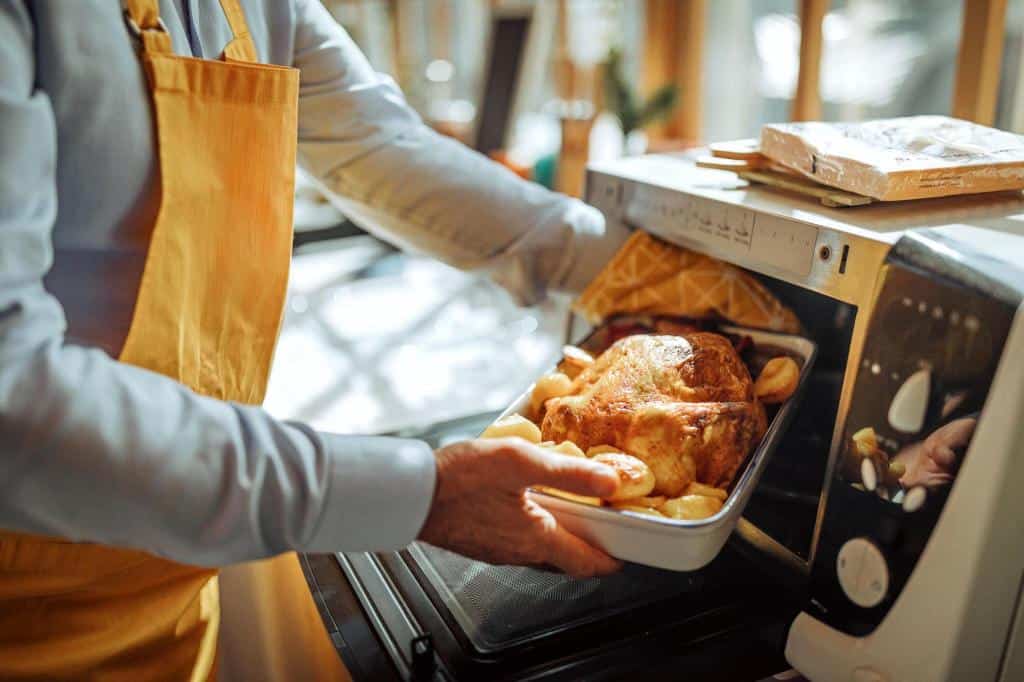
If you’re looking for a quick and easy way to reheat your Whole Foods turkey, using the microwave can be a viable alternative. However, there are a few considerations you need to keep in mind to ensure that your turkey turns out moist and delicious.
Firstly, it’s important to adjust the power level on your microwave. Select a lower power setting, like 50%. This prevents the turkey’s outer layer from becoming rubbery. It also lets the heat penetrate evenly. This will help maintain its juiciness and ensure that every bite is flavorful.
Another key tip when reheating turkey in the microwave is to turn it at regular intervals. Since microwaves can have hot spots, rotating the dish during cooking will help distribute heat more evenly. By stirring food when using the microwave, you avoid any potential areas of overcooking or drying out. Aim to turn the turkey every two minutes or so for the best results.
Using the microwave won’t give as crispy a skin as other methods. But, these tips will help you get good results with little effort. Just be sure not to overlook safety considerations – ensure that your turkey reaches an internal temperature of 165°F before consuming.
Slicing Techniques Before Heating
Before reheating a whole turkey from Whole Foods, it’s important to consider the preferred slicing technique. This step is optional but can greatly enhance the presentation and overall experience of your meal. By carving the turkey prior to reheating, you have greater control over portion sizes and can arrange the slices in an attractive manner on serving platters.
To achieve perfect slices, start by letting the turkey cool down for at least 20 minutes after removing it from its packaging. This allows the juices to redistribute throughout the meat, making it easier to carve without losing moisture. Using a sharp knife or an electric carving knife, carefully slice thin pieces against the grain of the meat for maximum tenderness.
Another benefit of pre-slicing before reheating is that you can remove any unwanted skin or excess fat during this process. Trim off these parts beforehand. This will make each slice leaner and prettier on plates or sandwiches later.
Just remember to store these trimmed bits separately if they are going to be used for other recipes like soups or stews – waste not! So if you’re looking for that professional touch and want your rejuvenated Thanksgiving centerpiece to rival those served up at high-end restaurants; taking some time out – prepping your perfect cuts prior getting reheat underway might just be what sets apart Turkey Day as extraordinary rather than ordinary!
Adding Moisture During Heating
One of the biggest challenges when reheating turkey is preventing it from becoming dry. To combat this, we recommend adding moisture to the process. One effective way to do this is by using broth or other liquid options. By incorporating a flavorful liquid, you not only prevent dryness but also add depth and richness to your reheated turkey.
Broth, whether homemade or store-bought, can work wonders in keeping your reheated turkey moist. You can use chicken or vegetable broth as a base and enhance the flavor further by infusing herbs or spices into it. Simply pour some warm or reheat broth over the sliced turkey before covering it with aluminum foil for reheating in the oven or on low heat on a stovetop.
If you prefer additional flavors along with moisture, consider marinating your pre-cooked turkey pieces beforehand. Mix olive oil, lemon juice, garlic, and herbs like rosemary and thyme. They add zest and help keep food moist when cooking.
Next time you’re reheating Whole Foods’ turkey, remember to add liquids. It can be broth or marinade. This will keep it succulent without sacrificing tenderness. Your taste buds will thank you!
| Related: Can You Drink Chicken Broth as a Beverage By Itself? |
Thermometer Usage During the Cooking Process
One of the most important tools you can have in your kitchen arsenal when reheating turkey is a good quality instant-read thermometer. This handy device allows you to monitor the inside temperature of your turkey. It ensures it reaches the safe minimum temperature. This kills any bacteria and viruses.
While visual cues like golden brown skin or clear juices are helpful indicators of doneness, they can sometimes be misleading. Using a thermometer takes away all guesswork and gives you peace of mind.
When using a digital instant-read thermometer, start by inserting it into the thickest part of the turkey’s thigh without touching bone for accurate results. The desired internal temperature should reach at least 165°F (74°C), which is considered safe for consumption according to food safety guidelines. If you’re reheating a whole cooked turkey from Whole Foods, make sure to insert the thermometer into different parts of both white and dark meat areas to ensure even heating throughout.
Using a thermometer not only guarantees safety but also helps maintain the quality and juiciness of your reheated turkey. Overcooking in an attempt to ensure doneness can lead to dry and tough meat, while undercooking poses health risks.
Safety Precautions for Reheating Turkey from Whole Foods
When it comes to reheating turkey, food safety should always be a top priority. By following the right handling practices and storage times, you can ensure your meal is tasty and safe.
First and foremost, make sure to handle the turkey with clean utensils and baking trays. Bacteria can multiply quickly on surfaces that come into contact with raw or partially cooked meat. So, wash your hands well before handling the turkey. Use separate utensils for each task, like carving knives for slicing and serving spoons for dishing. Additionally, remember to disinfect any surfaces or equipment used in the process.
After purchasing pre-cooked turkey from Whole Foods, it is essential to store leftovers properly. The general rule of thumb is that cooked turkey can be safely stored in the refrigerator for up to four days after purchase. Beyond this period, there’s an increased risk of bacterial growth and potential foodborne illnesses. If you’re unable to finish all the leftovers within this timeframe, consider freezing them instead. Cooked turkey can last in the freezer for up to three months while maintaining its quality.
Lastly, when it comes time to dispose of any uneaten reheated turkey or leftovers that have exceeded their storage period, exercise caution. Discard any portions that have been left at room temperature for more than two hours or show signs of spoilage such as an off odor or slimy texture. While wasting food isn’t ideal, prioritizing safety over consumption ensures a healthy dining experience without risking illness.
Take these safety precautions seriously. Practice good hygiene while handling. Follow recommended storage periods. Know when to let go. Doing this will create a framework for enjoying tasty reheated whole foods turkey. It will also protect your well-being in every bite.
| Also see: Is It Safe to Eat Undercooked Ground Turkey? |
Tips for Serving and Garnishing Reheated Turkey
1. Side dishes to complement your reheated turkey:
A perfectly reheated turkey deserves equally delicious side dishes. Consider serving creamy mashed potatoes. Also, consider roasted Brussels sprouts with bacon or vibrant cranberry sauce. They would make a colorful and flavorful plate of food. Don’t forget about classic stuffing or dressing, which pairs exceptionally well with the moist meat of the reheated turkey. A fresh green salad or steamed vegetables can also provide a refreshing contrast to the rich flavors of the main dish.
2. Condiments that enhance the flavor:
Elevate your reheated turkey by offering an array of condiments that will tantalize your taste buds. Tangy mustard, zesty cranberry relish, sweet honey glaze, or even a spicy barbecue sauce can add deep layers of flavor to each bite. Put these condiments in small bowls or ramekins. Set them next to the sliced turkey. This way, guests can personalize their plates to their preferences.
3. Presentation ideas for an impressive display:
Impress your guests with tasty food. Also, impress them with a pretty display of your reheated turkey spread. Arrange slices beautifully on a platter adorned with fresh herbs such as rosemary and thyme for added visual appeal and aroma. Use decorative toothpicks in colors matching your table theme to hold together rolled-up pieces of turkey breast filled with tasty surprises like cream cheese and sundried tomatoes.
Consider these tips for serving and garnishing your reheated turkey from Whole Foods. They’ll help you create an enticing meal. Every detail, from side dishes to condiments and presentation, will delight both the taste buds and the eyes at your table.
Conclusion
Reheating leftover turkey can often be a nerve-wracking experience. We’ve all been there. We spent hours cooking and perfecting our Thanksgiving masterpiece. But, then we worry about drying out the meat when reheating it.
But fret no more! This guide will debunk myths and offer insider tips. It will give you all the knowledge needed to confidently reheat your Whole Foods turkey like a pro.

